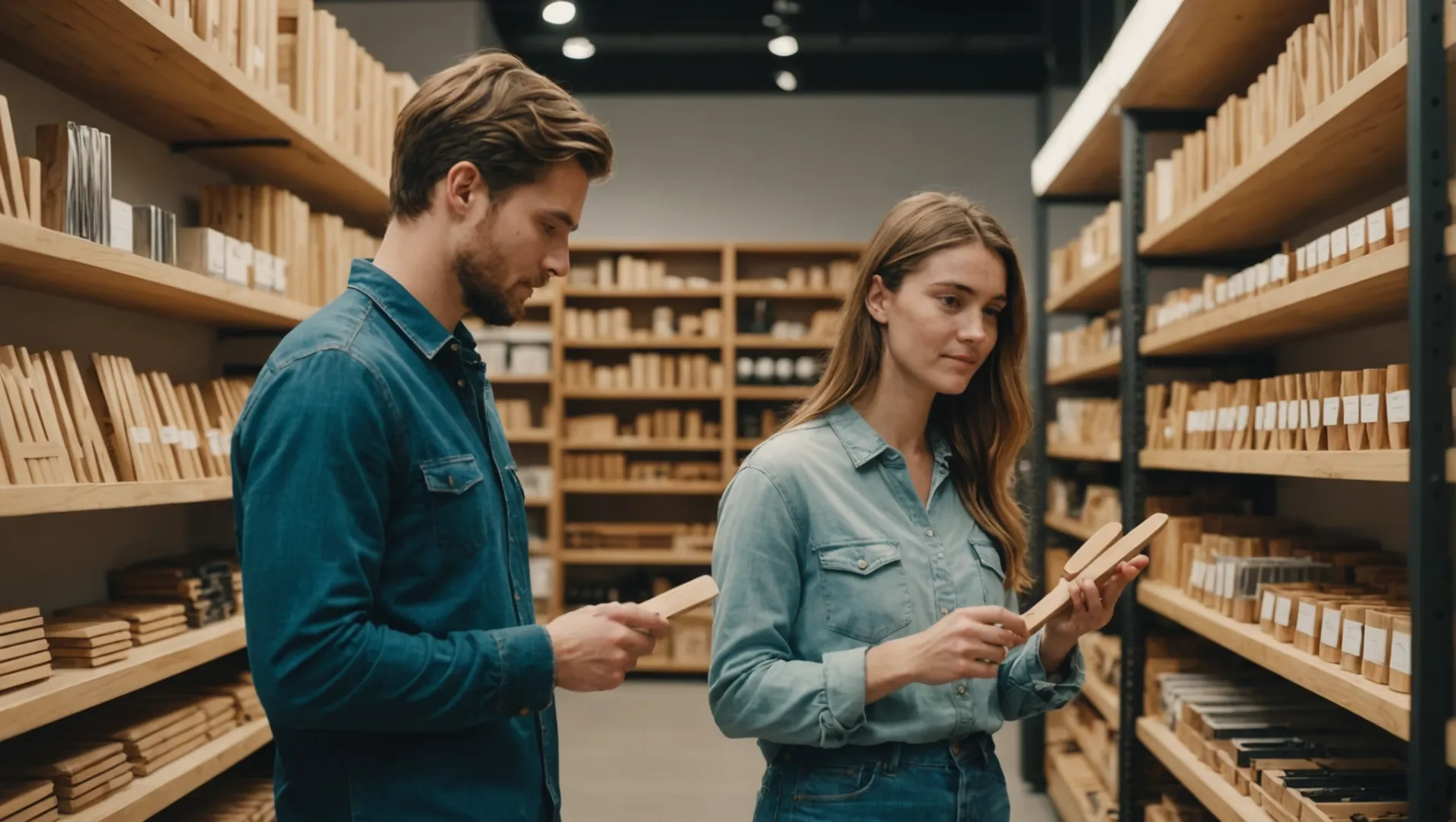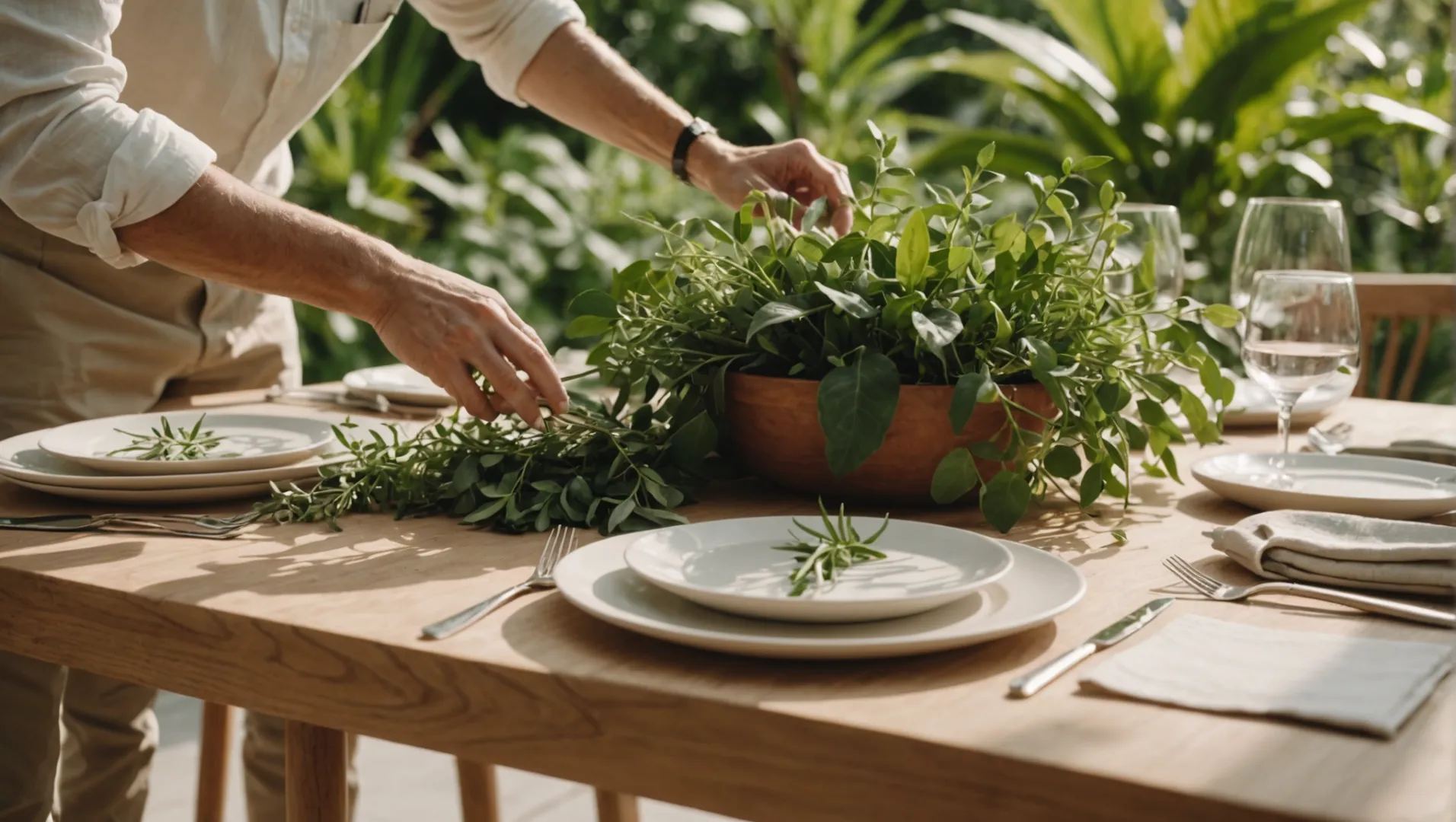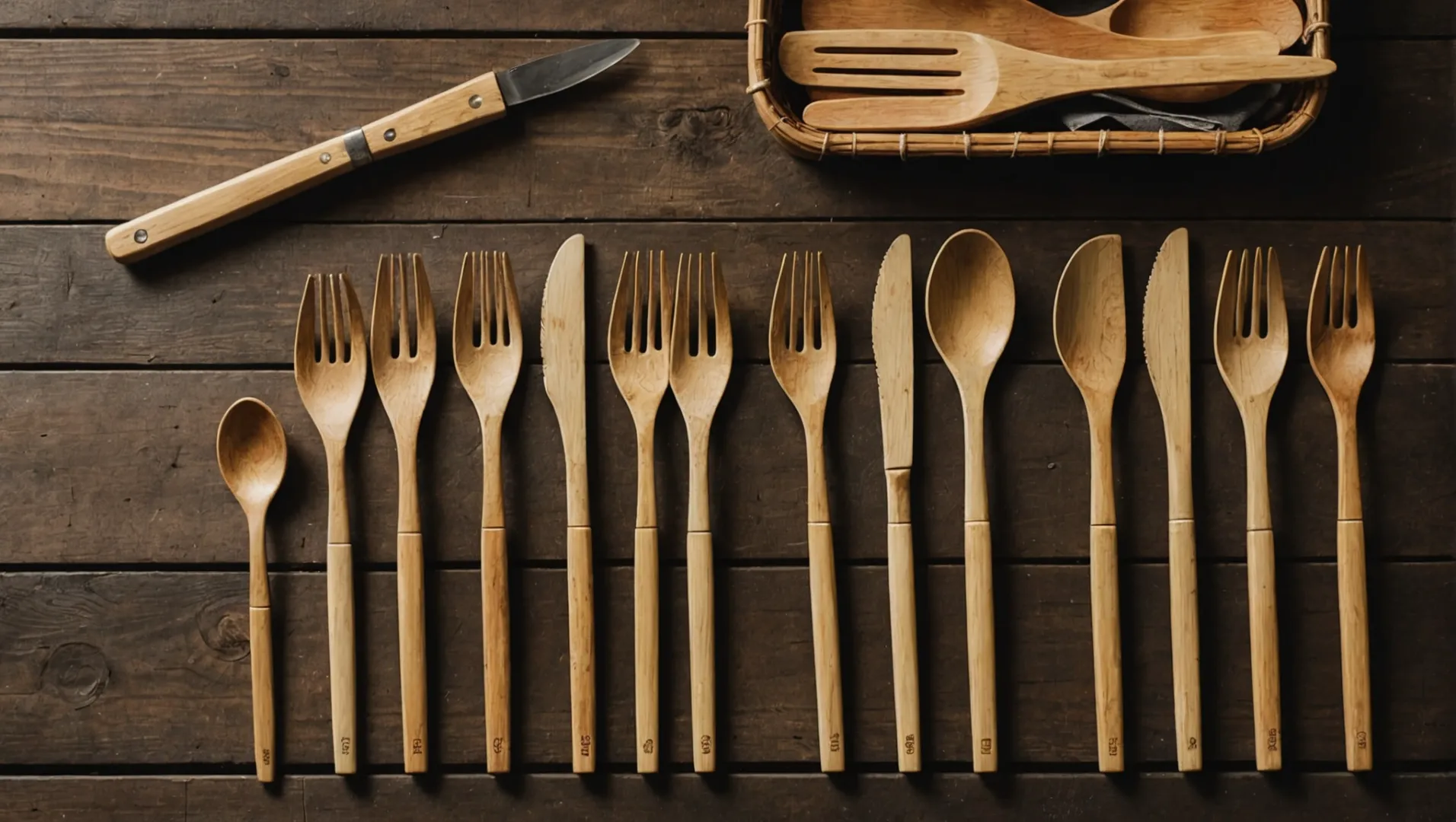
As our world shifts towards sustainability, I can’t help but notice how disposable wooden cutlery is becoming a staple in eco-conscious households and events.
Key consumer groups buying disposable wooden cutlery include environmentally conscious millennials, health-focused families, event organizers, and eco-friendly businesses. These groups prioritize sustainability and hygiene, aligning with trends in eco-friendly living and dining solutions.
While we've identified the primary consumer demographics, understanding their motivations and purchasing behaviors can provide deeper insights into this burgeoning market. Read on to discover what drives these groups to choose wooden over plastic.
Millennials prefer wooden cutlery for its aesthetic appeal.True
Millennials prioritize aesthetics and unique dining experiences, favoring wooden cutlery.
What Motivates Millennials to Choose Wooden Cutlery?
Millennials are at the forefront of the sustainability movement, opting for eco-friendly choices like wooden cutlery.
Millennials choose wooden cutlery for its sustainability, aesthetic appeal, and eco-friendliness. They value products that reduce environmental impact, align with their lifestyle values, and offer a unique dining experience. This generation's purchasing decisions are driven by awareness and responsibility towards nature.

The Appeal of Sustainability
Millennials are known for their strong advocacy of sustainability and environmental consciousness. This generation grew up during a time of heightened awareness about climate change and ecological degradation, which has significantly influenced their consumption patterns.
Wooden cutlery appeals to millennials because it aligns perfectly with their values. Unlike plastic utensils, which contribute to pollution and landfill overflow, wooden cutlery is biodegradable1 and compostable. This makes them an excellent choice for individuals committed to reducing their carbon footprint and supporting sustainable living.
Aesthetic and Authentic Experience
Beyond environmental concerns, millennials also prioritize aesthetics and the overall dining experience. Wooden cutlery offers a rustic charm that plastic alternatives simply cannot match. The natural texture and warmth of wood provide a tactile and visual appeal that enhances dining experiences, whether at home or in restaurants embracing a farm-to-table ethos.
Additionally, using wooden utensils can evoke a sense of authenticity and connection to nature, which resonates with millennials' desire for genuine experiences. This generation often seeks products that are not only functional but also enriching to their lifestyle.
Health and Safety Considerations
Health consciousness is another driving factor behind millennials' preference for wooden cutlery. Unlike plastic utensils that may leach harmful chemicals into food, wooden alternatives are free from toxins. Many manufacturers treat wooden cutlery with food-safe oils or waxes, ensuring they are safe for use without compromising hygiene.
This aligns with the millennial trend towards clean living and natural products. By choosing wooden utensils, they minimize exposure to potential health risks associated with plastics while still enjoying the convenience of disposable cutlery.
Support for Ethical Practices
Millennials tend to support brands that demonstrate ethical practices, including those that ensure transparent supply chains and sustainable sourcing. Wooden cutlery companies that provide eco-certifications2 or utilize technologies like blockchain to trace material origins gain favor among this demographic.
These practices help assure millennials that the products they purchase are not only good for the environment but also ethically produced, fostering a sense of trust and loyalty towards brands embracing responsible manufacturing processes.
Millennials prefer wooden cutlery for its aesthetic appeal.True
Wooden cutlery's rustic charm enhances dining experiences, appealing to millennials.
Plastic cutlery is more eco-friendly than wooden cutlery.False
Wooden cutlery is biodegradable and compostable, unlike plastic, reducing pollution.
How Do Eco-Conscious Families Impact Market Demand?
Eco-conscious families are redefining market trends, prioritizing sustainable products and shaping industries with their purchasing power.
Eco-conscious families drive demand for sustainable products, including wooden cutlery, by prioritizing eco-friendly living and influencing market dynamics. Their focus on sustainability and health shifts consumer behavior and encourages businesses to adopt greener practices.

The Rise of Sustainability in Family Households
As the world grapples with environmental issues, eco-conscious families are emerging as powerful advocates for sustainable living. These families prioritize reducing their carbon footprint and often lead by example, opting for products like disposable wooden cutlery over plastic alternatives. Their choices directly impact market demand by signaling a preference for sustainable products3.
Why Wooden Cutlery Appeals to Eco-Families
One of the primary reasons eco-conscious families gravitate towards wooden cutlery is its environmental benefits4. Wooden utensils are biodegradable, reducing landfill waste and minimizing environmental harm. Additionally, they are often crafted from sustainably sourced materials, aligning with eco-families' values of protecting natural resources.
Health Considerations Driving Demand
Beyond environmental concerns, health plays a crucial role in these families' purchasing decisions. Wooden cutlery is free from harmful chemicals typically found in plastic utensils, such as BPA. This naturally aligns with the health-focused lifestyle many eco-conscious families pursue, further driving demand for wooden options.
Educational Influence and Generational Impact
Eco-conscious families also serve as educators within their communities, promoting sustainable practices. By choosing wooden cutlery, they inspire others to consider their environmental impact, potentially influencing broader consumer trends. This educational role extends to children, instilling values of sustainability that could perpetuate through generations.
The Economic Influence of Eco-Families
These families' commitment to eco-friendly products often translates into economic influence. As they consistently opt for sustainable goods, businesses take note, adapting their offerings to cater to this growing segment. This can lead to increased availability of eco-friendly products, reinforcing the market shift towards sustainability.
By examining the purchasing patterns and motivations of eco-conscious families, it becomes clear that their impact on market demand is significant and transformative. Their preferences not only shape consumer goods but also influence corporate practices, making them key players in the movement towards a more sustainable future.
Eco-families prefer wooden cutlery for health reasons.True
Wooden cutlery lacks harmful chemicals found in plastic, like BPA.
Plastic cutlery is more eco-friendly than wooden alternatives.False
Plastic cutlery is not biodegradable, unlike wooden options.
What Role Do Event Planners Play in This Market?
Event planners are pivotal in championing sustainable practices, significantly influencing the adoption of eco-friendly products like wooden cutlery.
Event planners drive the demand for disposable wooden cutlery by prioritizing sustainability in events. They choose eco-friendly utensils to align with green initiatives, reduce plastic waste, and meet client expectations for environmentally conscious events.

The Influence of Event Planners on Sustainable Choices
Event planners are often seen as gatekeepers of trends, especially when it comes to event logistics and supplies. With the growing emphasis on sustainability, planners are now more inclined to choose eco-friendly options like disposable wooden cutlery. This shift is not just about reducing plastic waste but also about enhancing the overall experience for attendees who increasingly value sustainability. By selecting biodegradable and compostable products, event planners align themselves with environmental trends5 and cater to clients who prioritize green initiatives.
Meeting Client Expectations
Clients today are more environmentally conscious than ever, often demanding that their events reflect their values. Event planners play a crucial role in meeting these expectations by incorporating sustainable elements into their planning. This includes opting for wooden cutlery over plastic, as it not only underscores the event's green credentials but also offers a unique aesthetic appeal. Such choices can significantly enhance a brand's reputation and attract clients who are committed to eco-friendly practices.
Cost vs. Sustainability
While cost is always a consideration, many event planners find that the benefits of using disposable wooden cutlery outweigh the expenses. The market for sustainable products is expanding, and with it, the availability of cost-effective options. Planners are also aware that investing in sustainable solutions can lead to long-term savings through positive brand perception and client retention. Tables comparing costs and benefits might help illustrate this point better:
| Option | Initial Cost | Long-term Benefit | Environmental Impact |
|---|---|---|---|
| Plastic Cutlery | Low | Low | Negative |
| Wooden Cutlery | Moderate | High | Positive |
Creating a Memorable Experience
The choice of cutlery can also be about creating a memorable dining experience. Wooden utensils provide a rustic, authentic feel that can enhance themed events or create a more natural atmosphere. This aligns with the current trend towards experiential events where every detail contributes to the overall experience.
Conclusion
Event planners are integral to the adoption of sustainable practices within the industry. Their choices not only impact immediate environmental outcomes but also influence future trends in event management. As awareness grows, their role in promoting products like disposable wooden cutlery will likely become even more significant.
Event planners prioritize eco-friendly cutlery to reduce waste.True
Planners choose wooden cutlery to align with sustainability goals.
Wooden cutlery is more expensive than plastic and less sustainable.False
Wooden cutlery, though pricier, is more sustainable than plastic.
Why Are Businesses Shifting Towards Sustainable Utensils?
As environmental concerns mount, businesses worldwide are transitioning to sustainable utensils, reflecting a broader commitment to eco-friendly practices.
Businesses are shifting towards sustainable utensils to reduce environmental impact, meet consumer demand for eco-friendly products, and comply with evolving regulations. This shift helps companies enhance their brand image while contributing to global sustainability efforts.

Addressing Environmental Concerns
The shift to sustainable utensils is largely driven by the urgent need to address environmental challenges posed by traditional single-use plastics. Plastic utensils, notorious for their long decomposition time, contribute significantly to landfill overflow and marine pollution. In contrast, sustainable alternatives, like wooden or bamboo utensils, are biodegradable and leave a much smaller ecological footprint.
A key factor is the full lifecycle analysis6 of these materials. Companies conducting comprehensive assessments of their product's environmental impact—from production to disposal—often find that sustainable utensils require less energy and resources overall.
Meeting Consumer Demand
Today's consumers are more environmentally conscious than ever before. Many actively seek out businesses that align with their values, favoring those that prioritize sustainability. As such, companies are increasingly adopting eco-friendly utensils as part of their brand strategy to attract and retain customers.
A 2021 survey revealed that 75% of millennials consider a brand's environmental impact when making purchasing decisions. By offering sustainable utensils, businesses can appeal to this demographic, potentially increasing market share.
Navigating Regulatory Changes
Regulations on plastic use are tightening globally, with many governments implementing bans or restrictions on single-use plastics. For instance, the European Union has prohibited certain plastic items, including cutlery, since July 2021.
Businesses preemptively adopting sustainable utensils not only ensure compliance with these regulations but also position themselves as industry leaders in sustainability.
Enhancing Brand Image
Embracing sustainability offers a dual advantage: it mitigates environmental harm and enhances a company's reputation. By promoting their use of eco-friendly utensils through marketing campaigns and certifications like FSC (Forest Stewardship Council), businesses can bolster their image as responsible corporate citizens.
Incorporating technologies such as blockchain7 for traceability in the supply chain further boosts credibility. This transparency reassures consumers about the ethical sourcing and production of the utensils they use.
Cost Implications and Benefits
While initial costs for transitioning to sustainable utensils may be higher compared to plastic counterparts, the long-term financial benefits can outweigh these expenses. Reduced waste management costs and potential tax incentives for eco-friendly practices can improve overall profitability.
Moreover, the positive public perception gained by using sustainable products can lead to increased customer loyalty and brand advocacy. Companies that have successfully navigated this transition often report an uptick in consumer engagement and sales.
Sustainable utensils decompose faster than plastics.True
Unlike plastic, materials like bamboo or wood decompose quickly, reducing waste.
75% of millennials ignore a brand's environmental impact.False
A 2021 survey showed 75% of millennials consider environmental impact in purchases.
Conclusion
Understanding consumer motivations behind the shift to wooden cutlery reveals significant insights into market trends. As sustainability becomes integral to consumer choices, brands must adapt to these evolving preferences.
-
Discover how biodegradable cutlery reduces environmental impact significantly.: In general, they are better for the environment. Most specifically, they reduce pollution, use less energy, limit the use of non-renewable ... ↩
-
Learn how eco-certifications boost brand credibility and consumer trust.: Discover essential eco-certifications like FDA, LFGB, and FSC for ensuring the safety and sustainability of wooden cutlery. ↩
-
Discover how eco-families influence sustainable product markets globally.: According to a 2020 McKinsey US consumer sentiment survey, more than 60 percent of respondents said they'd pay more for a product with sustainable packaging. ↩
-
Learn why wooden cutlery is favored for its environmental advantages.: When done in an efficient way the total amount of water used in producing wooden utensils is over 99% less than required to produce plastic utensils. This ... ↩
-
Discover how event planners are integrating eco-friendly practices.: By sourcing food, materials, and services locally, event organisers can minimise their event's carbon footprint and support local businesses, ... ↩
-
Learn how lifecycle analysis proves sustainability benefits over traditional plastics.: There are many benefits to LCA. The insights gained from an LCA can help you improve your product development, and environmental communication, ... ↩
-
Discover how blockchain ensures ethical sourcing and boosts brand trust.: Using blockchain can improve both supply chain transparency and traceability as well as reduce administrative costs. ↩

